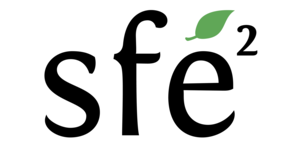We are looking for two Master students (Master 1 or 2 level) in our project ´SymbioSwap´ generously financed by the Pure Ocean Fund.
Duration: 5 months each (September 2025 – January 2026)
https://www.pure-ocean.org/nos-projets/symbioswap/
Background
Rapid global warming is increasingly impacting and changing marine ecosystems at an alarming rate, forcing marine organisms to adapt or migrate polewards. The Mediterranean Sea is at the forefront of these impacts as 1) the development of the Suez Canal permits its invasion by tropical species such as the upside-down jellyfish Cassiopea and 2) the landmass of Europe effectively physically prevents poleward migration. This will inevitably lead to the extinction of organisms that cannot compete or readily adapt to the pace of increasing ocean temperatures. While this so-called ‘tropicalization’ of the Mediterranean may provide a critical refuge for threatened species from the Red Sea and Atlantic, it simultaneously poses a serious threat to the native ecosystems of the Mediterranean and their high endemicity and biodiversity.
Photosymbiotic cnidarians such as corals and anemones are ideal model organisms to study these dynamics. While the mobile larval stage of Cnidaria permits migration and range expansion into more suitable climates, their sedentary lifestyle makes adult animals highly vulnerable to changes in their local environment. Further, ‘photosymbiotic’ Cnidaria live in symbiosis with microalgae that inhabit their tissues and provide nutrients and energy for the host metabolism. Unfortunately, this symbiosis is highly susceptible to temperature stress, which causes the breakdown of this symbiosis in a phenomenon termed ‘bleaching’. Importantly, while the dependence on microalgal symbionts may be the Achilles Heel of photosymbiotic cnidarians in the Anthropocene, it could also facilitate rapid adaptation through the acquisition of new symbionts better adapted to changing thermal regimes. Hence, we seek to understand the thermal limits for adaptation and range expansion of Mediterranean and Red Sea Cnidaria to identify threats and opportunities for the conservation of these unique ecosystems.
Symbiotic microalgae associated with corals and sea anemones exhibit distinct physiologies and adaptations to specific thermal regimes. These adaptations can result in differences in photosynthetic activity, translocation rates of photosynthetic carbon (the main energy source for the animal) from the algae to the host, and oxidative stress responses to temperature stress. The thermotolerance of corals therefore depends in part on the specific host-symbiont configuration and compatibility: that is, the identity of microalgal symbionts and their ability to support the host metabolism under the prevailing temperature conditions. Cnidaria from the Mediterranean commonly associate with cold-tolerant symbionts of the genus Philozoon, while Cnidaria from the Red Sea commonly host more heat-tolerant related symbionts of the genera Symbiodinium and Cladocopium. We hypothesize that this functional diversity of microalgal symbionts may facilitate the rapid adaptation of Cnidaria to the environmental conditions of the Mediterranean in the Anthropocene. Specifically, we aim to assess whether 1) tropical Cnidaria can adapt to the colder conditions of the Mediterranean winter by acquiring Mediterranean algal symbionts, and 2) native Mediterranean Cnidaria can adapt to global warming by acquiring tropical algal symbionts. For this, we will manipulate the native algal symbiont communities of tropical and temperate sea anemones, and assess the effect of this microbiome manipulation under different temperature regimes by investigating classical thermal stress responses, specifically aspects of nutrient cycling, photophysiology, and oxidative stress.
Approach
We will use two closely related sea anemones, i.e. the temperate Aiptasia couchii from the Mediterranean and the (sub-)tropical Exaiptasia diaphana from the Red Sea, as model systems to study the consequences of symbiont shuffling in host thermotolerance. First, we will isolate the cold- and heat-tolerant symbionts from these two species, respectively. Then, we will generate anemones that are aposymbiotic (free of algal symbionts) for both sea anemone species. This approach permits the reinfection of Mediterranean and Red Sea anemones with cold- and heat-tolerant algal symbionts in a full-factorial design (i.e., 4 host-symbiont combinations in total). We will then expose the fully recolonized anemones to Mediterranean and Red Sea temperature regimes, to assess their performance under cold (winter minimum) and heat (summer maximum) stress. To assess the stability and functioning of the symbiotic association we will target the entire holobiont response (host and symbiont in association), as well as host and algal symbiont responses separately. Symbiosis stability will be assessed by host and symbiont cell counts and biomass quantification. This will be linked to underlying changes in symbiotic nutrient cycling (oxygen fluxes to assess photosynthesis and respiratory carbon demand, stable isotope labelling to quantify metabolic exchange between symbiotic partners, ammonium uptake/release to assess anabolic and catabolic activity) as well as oxidative stress (photoinhibition as assessed by pulse amplitude fluorometry, quantification of lipid peroxidation and total antioxidant capacity). Taken together these response parameters will allow us to link patterns of holobiont thermotolerance to underlying symbiotic interactions.
This project will help us understand which partner in the cnidarian-algae symbiosis constitutes the ‘weak link’ that may result in cold bleaching. Insights from this work will be important for our understanding how Cnidaria might be able to adapt to environmental stress, in particular temperature extremes.
Team:
Principal Investigator: ANR Junior Professor Chair (CPJ) Dr. Claudia Pogoreutz, CRIOBE, Université de Perpignan Via Domitia, France
Co-Investigators:
Dr. Nils Rädecker, Helmholtz Institute for Functional Marine Biodiversity, Germany
Dr. Christine FERRIER PAGÈS, Centre Scientifique de Monaco, Monaco
Interested? Please send your CV and a letter of motivation explaining why you are interested in this position to: claudia.pogoreutz@univ-perp.fr
Deadline: 20 May 2025
Further reading:
– Baker (2001) Nature, 411:765-766. https://doi.org/10.1038/35081151
– Bianchi & Morri (2003). Biogeographia, 24:1. https://doi.org/10.21426/B6110129
– Cunning et al. (2015). Proceedings Roy Soc B: Biol Sci, 282: 20141725.
https://doi.org/10.1098/rspb.2014.1725
– Cunning et al. (2018). Coral Reefs, 37:145-152. https://doi.org/10.1007/s00338-017-1640-3
– González-Duarte (2016) The Cnidaria: Past, Present and Future.
https://link.springer.com/chapter/10.1007/978-3-319-31305-4_10
– Marangoni et al. (2021). J Exp Biol, 224:3, https://doi.org/10.1242/jeb.235275
– Rädecker et al. (2018). Front Phys, 9:214. https://doi.org/10.3389/fphys.2018.00214
– Rädecker et al. (2021) Proc Nat Acad Sci, 118:e2022653118. https://doi.org/10.1073/pnas.2022653118

Commentaires récents